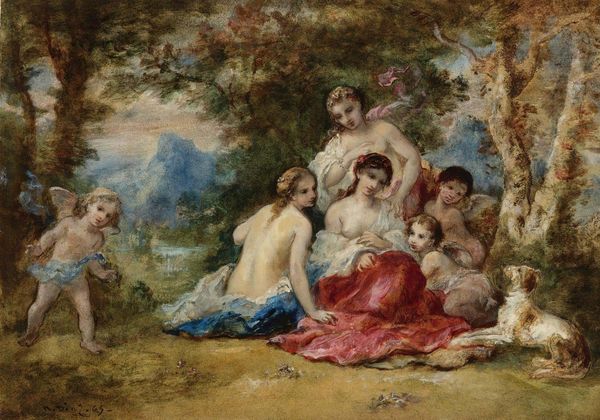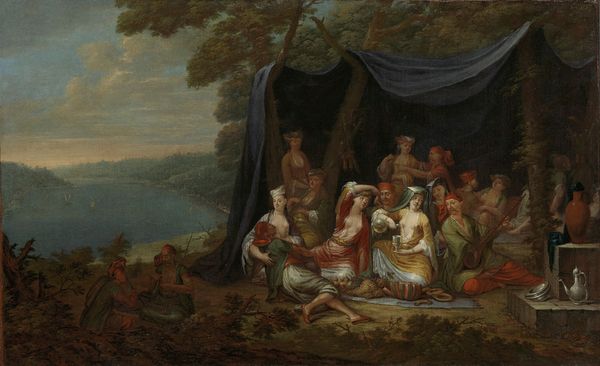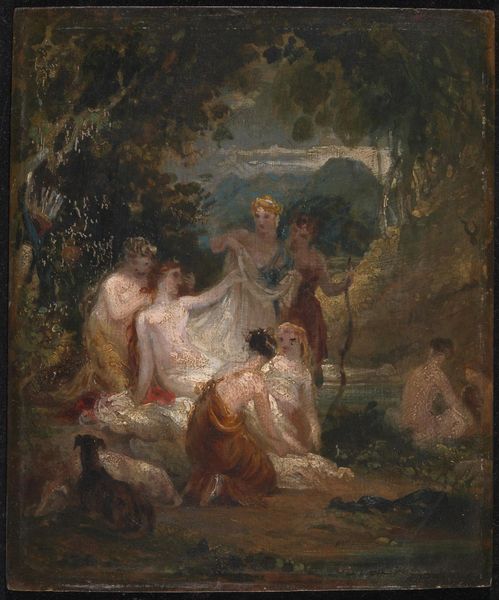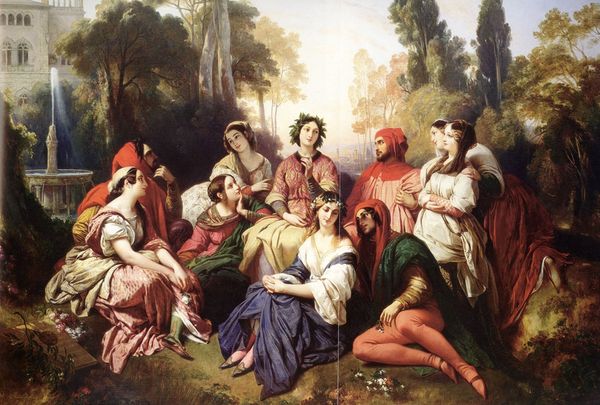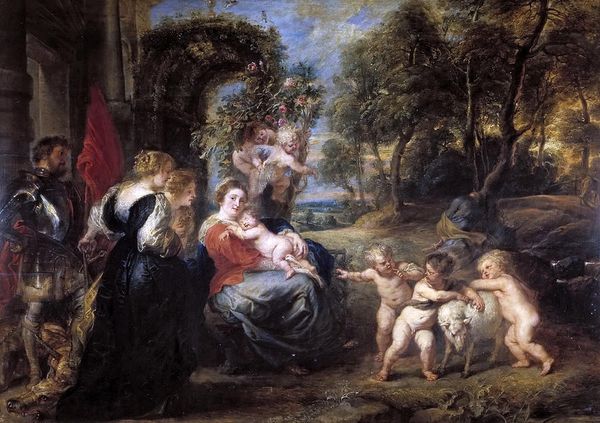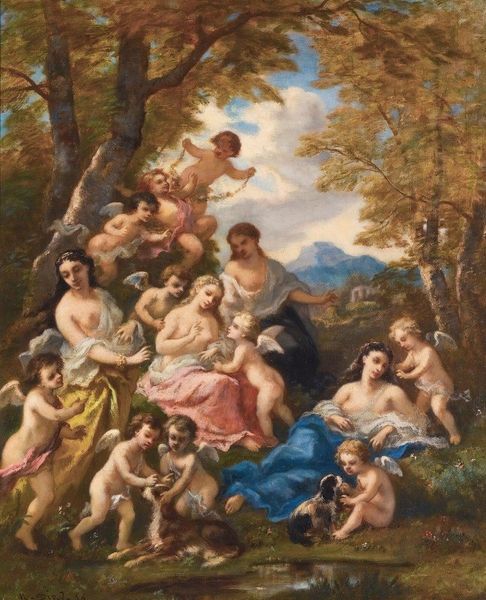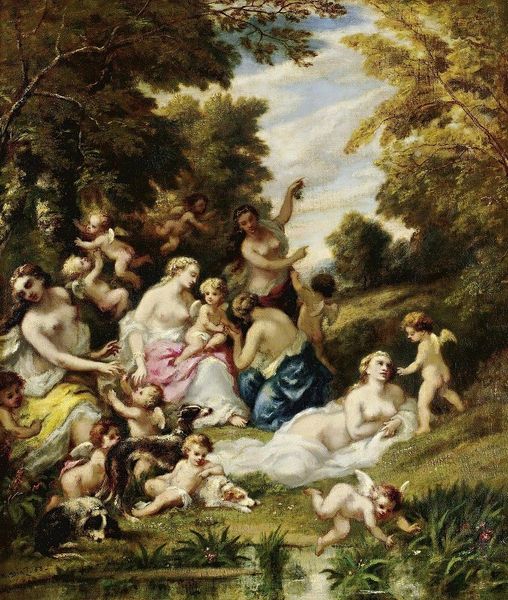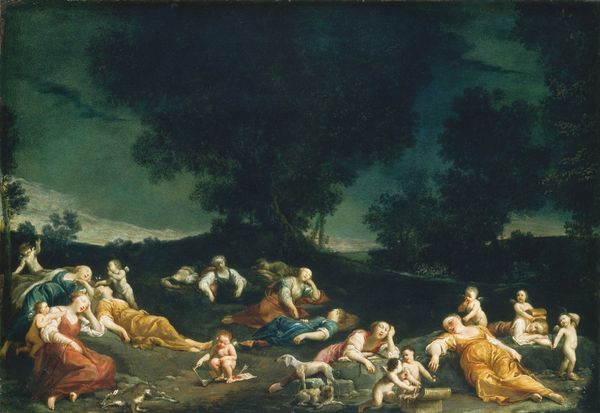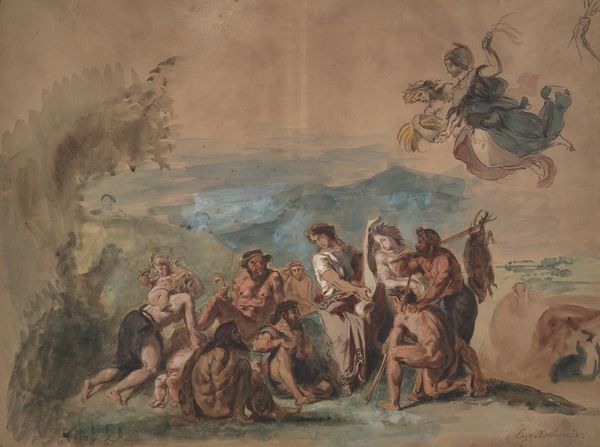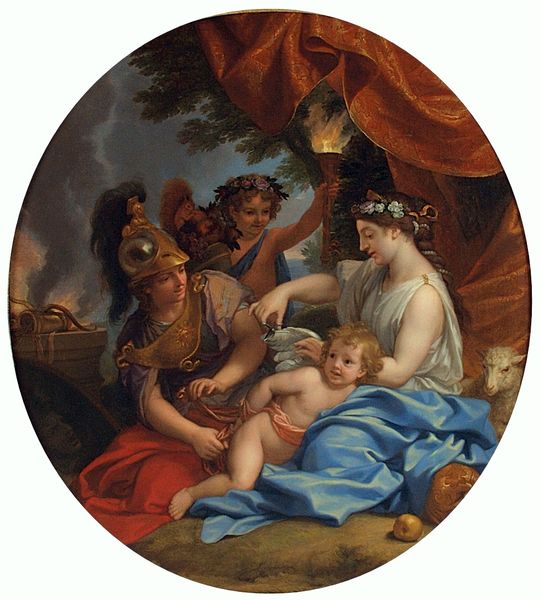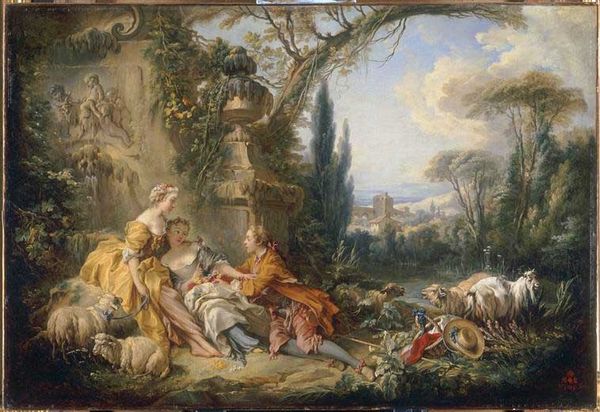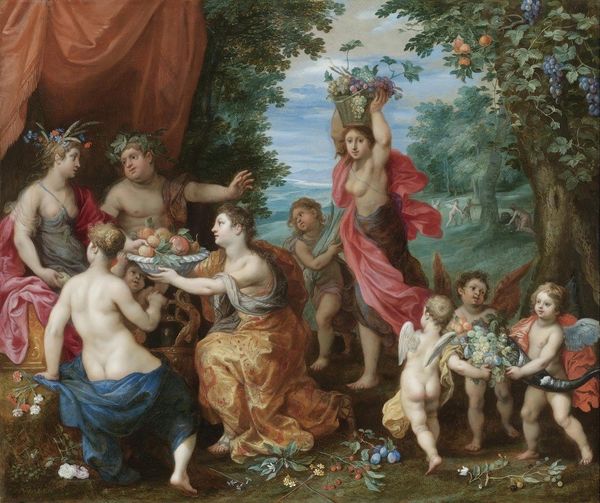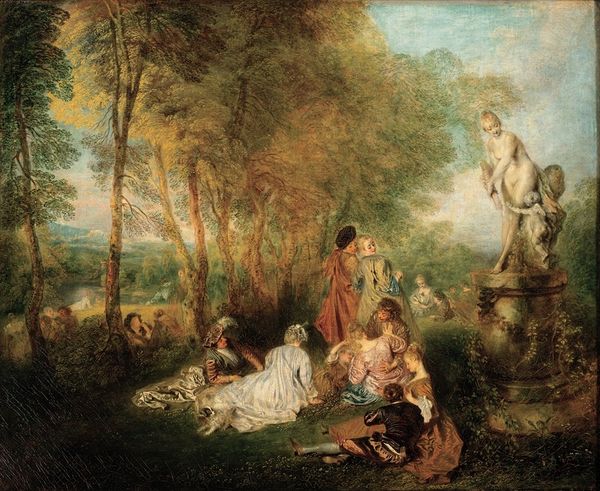
Copyright: Public Domain: Artvee
Curator: Narcisse-Virgilio Diaz’s “Oriental Ladies at Leisure,” dating from 1864, presents us with a richly textured scene of women in what was then considered an “exotic” setting. Editor: It’s certainly a painting that leans heavily into that “exotic” allure. The diffused light, the lush foliage…it creates this atmosphere of dreamy indolence, doesn't it? Curator: Indeed. The composition is masterful, drawing the eye across the grouping of figures through subtle shifts in light and shadow. The use of impasto, particularly in the fabrics, gives them a remarkable sense of volume and tactile presence. Observe the jewel-toned hues; it’s a veritable symphony of color! Editor: While the visual texture is striking, I can't help but see this painting through a more critical lens. The idealized representation of these women speaks volumes about the colonial gaze that informed much of 19th-century Orientalist art. Their languid poses and opulent garments…it perpetuates a Western fantasy more than presenting any sort of authentic reality. Curator: That reading is certainly valid, especially within a contemporary art-historical framework. The poses are almost sculptural in their arrangement, directing us towards particular qualities through a calculated composition of elements, the pipe functioning almost as a phallic symbol amid the scene. Editor: Exactly. We must also acknowledge that pieces like this actively reinforced hierarchies, both cultural and social. The subjects’ implied leisure is purchased, implicitly, by others' labor and subjugation, made manifest through display of material comfort. How does this relate to contemporary politics and imagery? Curator: True; beyond the surface allure, there are more complex ideological structures operating here. Consider the application of paint as a performative process; thick, gestural strokes evoking the female form that challenge academic painting but reinforces orientalism. This tension of binaries permeates. Editor: A tension that, ultimately, keeps the image from being purely celebratory, and positions it instead as a somewhat problematic document of its time. It showcases artistic technique alongside cultural assumptions and imbalances. Curator: Absolutely. Through visual analysis of the artwork’s materiality, a larger narrative can be drawn, a powerful way to deconstruct. Editor: Examining "Oriental Ladies at Leisure" allows us a chance to acknowledge both Diaz's skill as a painter and also interrogate the historical circumstances that shaped not just his vision, but ours as well.
Comments
No comments
Be the first to comment and join the conversation on the ultimate creative platform.
